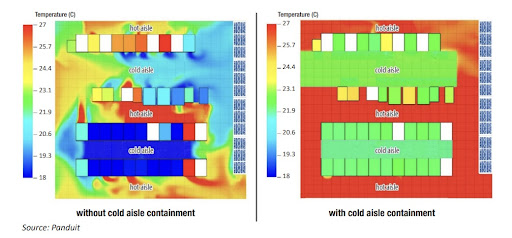As every business adds dozens of solutions, apps, or platforms to their tech stack every year, how do the data storage options evolve? Every organization—from local businesses and SMEs to massive enterprises—needs to consider several different criteria when choosing data storage options. Maintenance costs, security, data accessibility, and data recovery are just a few of these criteria.
A new research report sheds light on the evolution of data storage options and what most companies are flocking to in 2022 and beyond. Let’s take an in-depth look at it.
The Need for (Even) More Data Storage
2020 brought a massive spike in digital transformation across industries. Companies of all sizes increased their spend on technology and generated more data. Naturally, this change brought about another change—how and where that data is stored.
One of the first findings in a recent Data Center Frontier report paints the picture of this massive growth: “the global data center infrastructure market size is projected to reach $142.31 billion by 2027, compared to 2019, when the global market value stood at $94.56 billion.”
How Data Storage and Transfer Preferences Are Changing
Efficiency and security are top considerations when choosing data storage solutions. In 2022 and beyond, we’ll see a balancing of solutions like cloud, colocation, and on-premise, with an important caveat: on-premise data centers are becoming more edge-like. They’re becoming smaller, more decentralized, and designed to optimize efficiency and security.
Why the migration from cloud solutions? Because organizations have started to realize that the cloud costs way more than advertised and now they are beginning to question all its value propositions.
Another important aspect to consider is the need for speed. Organizations are legitimately asking how much does it cost to deliver content in the cloud and how fast is it. When the speed to cost ratio is not satisfying enough, they will be looking at edge alternatives.
The New Kids on the Old Storage Block
If cloud solutions don’t meet expectations anymore, what do organizations really want? Ideally, they want to “balance critical workloads, resiliency, and economics.” This is why they use a combination of edge, colocation, and hyperscale solutions to help them deliver what a cloud-only approach cannot.
There are currently around 6,600 colocation and wholesale data center facilities across the world. This helps achieve the balance mentioned above: a pivot away from centralized cloud ecosystems to distributed platforms that can support the new connectivity, efficiency, and speed requirements of today’s global economy.
Moreover, the increased demand for colocation and edge solutions stems from the need for sustainability. ESG and corporate citizenship are coming into focus for companies of all sizes.
Thus, new partnerships emerge: cloud providers create partnerships with colocation and edge computing facilities to deliver faster deployments and highly resilient solutions. More and more organizations are looking for regional locations and edge support for their “support network servers, switches, firewalls/DMZ, UPS, and backup systems.” Moving some of their activity from the cloud to colocation facilities helps enterprises achieve all these things, along with better security and better access to data.
Colocation Driving Innovation
Innovation is another thorny aspect of cloud and on-premise solutions. The need to review each component in a data center can easily turn into a budgeting nightmare. Latency and outages are common-place for on-premise and cloud data centers and, oftentimes, they are due to the fact that the technology used is obsolete. It’s not just that it can’t withstand the speeds organizations require now, but, when you only patch some of the issues, the rest are bound to implode at some point.
From using the latest high-speed fiber cabling solutions to implementing new cooling technologies, on-premise data center administrators and cloud providers often find that the ongoing effort to support current needs—not to mention the environmental impact—is far beyond what they initially bargained for.
Just take a look at the difference cold/hot air containment can make. It’s a basic improvement, but one that can be very costly for an on-prem data center.

Want to learn more about this? Find out how The Heartland Data Center uses hot aisle containment to limit downtime and latency.
Colocation: for When You Need Real Scalability
According to an IDG Research Services Survey, the number one priority for companies that plan for data center construction or expansion is scalability, with 82% of respondents citing it.
This is where colocation truly shines. An on-premise data center has its scalability limits and, even before you reach them, every upgrade will cost a lot, especially in terms of the team hired to manage it. Cloud solutions aren’t completely flexible, as you’re expected to fall within predefined packages and get hit with surprise fees.
Colocation, on the other hand, is 100% scalable and upgradeable. You pay for the space you use—the exact space you use. You don’t have to pay for an extra rack or additional usage just to meet an arbitrary quota.
Want to learn more about striking the right balance between the various storage and transfer options? Check out the full Data Center Frontier report here.
Learn more about why organizations of all sizes migrate to colocation services? Here’s all you need to know about the benefits of colocation and how the Heartland Technology Data Center (HTDC) can help.